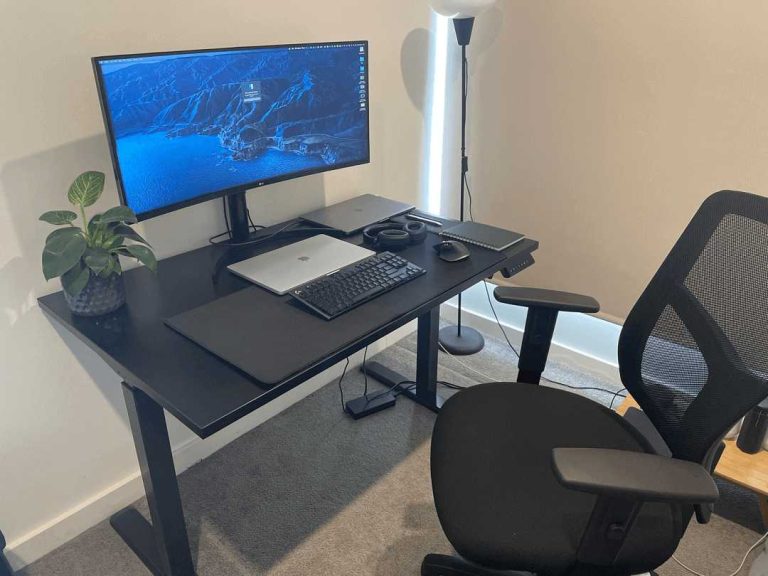To optimize your IPS monitor for editing, start by calibrating your display regularly using professional calibration tools or software to ensure color accuracy. Adjust the brightness, contrast, and color settings to match industry standards, and enable hardware calibration if available. Using a colorimeter can significantly enhance precision, providing a better editing experience with true-to-life visuals.
For those looking to get the most out of their IPS monitor for editing, the key lies in proper calibration and display settings. Fine-tuning these elements ensures accurate colors, reduces eye strain, and enhances overall image quality. In this article, we’ll explore simple yet effective steps to optimize your IPS monitor, helping you achieve professional-level editing results right from your desk.
Starting with a high-quality IPS monitor is great, but without proper adjustments, you might not be seeing its full potential. Whether you’re a photographer, videographer, or graphic designer, your editing work depends on precise colors and sharp details. Many users overlook essential calibration steps or ignore display settings that can make a big difference. Luckily, optimizing an IPS monitor for editing isn’t complicated—just some focused tweaks can dramatically improve your workflow and output. Keep reading to learn how to calibrate, configure, and maintain your monitor so it becomes a reliable tool for all your creative projects.
How to Optimize IPS Monitor for Editing
Understanding Why IPS Monitors Are Ideal for Editing
Many digital artists and video editors prefer IPS monitors because of their color accuracy and wide viewing angles. Unlike TN panels, IPS screens show consistent colors from nearly any angle, which is essential for editing work. This technology helps you see true colors without distortion, making your edits more precise.
Adjusting Brightness and Contrast for Better Clarity
Start by setting your monitor’s brightness to a comfortable level that matches your working environment. A common recommendation is around 120 to 150 candela per square meter. Next, adjust contrast to enhance the differentiation between colors and shades without causing eye strain. Proper balance here allows you to see details more clearly.
How to Calibrate Brightness and Contrast
Use built-in monitor settings or calibration tools to fine-tune these parameters. You might find preset modes for editing, but customizing your own yields better results. Regular calibration ensures consistent color and brightness over time.
Calibrating Your IPS Monitor for Accurate Color Reproduction
Calibration is a key step in optimizing an IPS monitor for editing. It aligns your monitor’s output with industry standards, ensuring your colors are true and consistent. You can use software calibration tools or hardware calibrators for the most accurate results.
Choosing the Right Calibration Tool
Invest in a hardware colorimeter or spectrophotometer for precise calibration. Some popular options include the X-Rite i1Display Pro or the Datacolor SpyderX. These devices work with calibration software to analyze your display and make necessary adjustments.
Calibration Process Step-by-Step
Connect your calibration device to your computer and follow the software instructions. Typically, you’ll adjust the monitor’s settings during the process. After calibration, save the color profile and set it as default for your system.
Adjusting Color Temperature and Gamma Settings
Color temperature influences the warmth or coolness of your display, which can impact how you perceive colors. For editing, a neutral temperature around 6500K is standard. Gamma settings control how midtones are displayed, with a common value being 2.2 for typical editing work.
Setting the Ideal Color Temperature
Navigate to your monitor’s on-screen display (OSD) menu and select “Color Temperature.” Set it to 6500K or a “Neutral” preset. This provides a balanced and natural look that aids in accurate color editing.
Adjusting Gamma for Better Grading
Find the gamma setting in your monitor controls and set it to 2.2. This is the industry standard for photo and video editing, ensuring that tonal gradations appear smooth and true to life.
Using Software for Fine-Tuning and Profile Management
Beyond hardware adjustments, software calibration tools offer detailed control over your monitor’s performance. They also enable you to manage multiple profiles for different editing tasks.
Popular Calibration Software Options
Some widely used options include DisplayCAL, CalMAN, and the software provided with calibration devices. These tools analyze color output and generate profiles that improve accuracy across various applications.
Applying and Switching Between Color Profiles
Save different profiles for specific tasks like photo editing, video grading, or general browsing. Switch profiles easily through your operating system settings or display management software. This flexibility helps maintain accuracy across different editing workflows.
Optimizing Display Settings for Different Editing Tasks
Different projects may require specific display settings to achieve optimal results. For example, color grading for videos demands different adjustments than photo retouching.
Creating Custom Presets
Use your monitor’s OSD menu to create and save custom presets tailored for tasks like color correction, retouching, or general editing. Switching between these presets allows a consistent workflow without manual adjustments each time.
Temperature and Brightness for Specific Tasks
Adjust brightness and color temperature based on your work. For detailed color work, prefer a dimmer environment with calibrated settings. For quick reviews or general tasks, increase brightness for better visibility.
Controlling Ambient Light and Workspace Lighting
Ambient light greatly influences how you perceive your monitor. Too much light causes glare, while too little can strain your eyes. Strive for a balanced workspace with consistent lighting.
Tips for Effective Workspace Lighting
Use neutral-colored LED lights that do not cast colored tints on your monitor. Place lights behind or beside your monitor to reduce reflections and glare. Maintain consistent lighting to prevent your eyes from adjusting to fluctuating light levels.
Avoiding Glare and Reflections
Position your monitor so that windows or bright lights are not directly in front or behind it. Use matte screen protectors if reflections become a problem. Proper positioning enhances color fidelity and reduces eye fatigue.
Maintaining Your IPS Monitor for Consistent Performance
Regular maintenance prolongs the lifespan of your monitor and keeps its calibration accurate. Cleaning your screen properly and monitoring its health are essential.
Cleaning Your Monitor
Use a soft microfiber cloth to wipe dust and fingerprints gently. Avoid harsh chemicals—water or screen-safe cleaning solutions are recommended. Clean your monitor regularly to maintain clarity and prevent dust buildup.
Monitoring for Color Shift and Dead Pixels
Check your monitor periodically using calibration software or diagnostic tools. Look for color inconsistencies, dead pixels, or backlight issues. Early detection prevents long-term inaccuracies affecting your editing work.
Additional Tips for Enhancing IPS Monitor Performance
Optimizing your viewing experience extends beyond calibration. Consider hardware upgradess and ergonomic adjustments for maximum productivity.
Consider a Hardware Calibration Device
A dedicated device ensures your monitor maintains accurate color over time. It automates calibration routines and provides consistent results, saving you time.
Adjusting Viewing Angles and Seating Position
Position your monitor directly in front of you, at eye level. Use adjustable stands or monitor arms to maintain ergonomic posture. Proper alignment reduces eye strain and enhances color perception.
Upgrading Hardware for Better Editing
Invest in a monitor with a high color gamut (such as Adobe RGB or DCI-P3) and a high resolution for detailed work. Match your hardware with robust graphics cards and color management software for seamless performance.
Related Topics to Consider for Better Editing Experience
Expanding your knowledge about monitor calibration and setup can further improve your editing workflow.
Color Management Workflow and Software
Learn how different editing programs handle color profiles and calibration. Using consistent workflows ensures your edits look the same across devices and outputs.
Understanding Rec. 709 and sRGB Standards
Know the standards suitable for your projects, especially for web or broadcast content. Working within these color spaces guarantees your work meets industry requirements.
Choosing the Best IPS Monitor for Editing
Research monitors with high color accuracy, uniform backlighting, and wide viewing angles. Prioritize features like hardware calibration support and high resolution for professional results.
This comprehensive approach to optimizing an IPS monitor guarantees that your editing process remains precise, consistent, and enjoyable. Regular calibration, proper lighting, and ergonomic setup all contribute to achieving the best possible results while making your workflow smoother.
Here’s how to make your monitor colors crispy #gaming #computertips #pc #monitor #monitorcolors
Frequently Asked Questions
How can I calibrate my IPS monitor specifically for editing tasks?
Start by using a professional calibration tool to ensure accurate color and brightness settings. Adjust the monitor’s settings using the calibration software, focusing on gamma, white point, and color space to match industry standards such as sRGB or Adobe RGB. Regular calibration helps maintain color consistency over time, which is essential for precise editing work.
What display settings should I optimize for better image clarity on an IPS monitor?
Adjust the contrast and brightness levels to suit your ambient lighting conditions, ensuring details are visible without causing eye strain. Enable any available sharpness settings to enhance image clarity, but avoid over-sharpening, which can introduce artifacts. Additionally, set the monitor’s color temperature to a standard like 6500K for accurate color representation.
How does ambient lighting impact the performance of an IPS monitor during editing?
Ambient lighting affects how colors and contrasts appear on your screen. Working in a well-lit environment with consistent lighting reduces eye strain and prevents glare or reflections that can distort your perception of colors. Ideally, position your monitor to avoid direct light hitting the screen and use adjustable lighting to create a balanced workspace.
What role does refresh rate and response time play in editing with an IPS monitor?
A higher refresh rate and faster response time provide smoother image transitions, which are beneficial when reviewing videos or animations. While not as critical as color accuracy, selecting a monitor with a refresh rate of at least 60Hz and low response times helps prevent motion blur and ensures more precise editing of moving images.
How should I configure the color profiles for different editing projects on an IPS monitor?
Create and assign specific color profiles tailored to each project type, such as photography, video editing, or graphic design. Use calibration tools to generate these profiles, ensuring each one accurately reflects the intended output. Switch between profiles as needed to maintain consistency and accuracy across various tasks.
Final Thoughts
Optimizing an IPS monitor for editing involves calibrating color accuracy and adjusting brightness for precise visuals. Use hardware calibration tools to achieve consistent color representation. Fine-tune settings to reduce glare and enhance contrast for better detail visibility.
Ensure that your monitor settings are tailored to your editing workflow, enabling smoother and more accurate editing sessions. Regularly update monitor drivers and firmware to maintain optimal performance.
In conclusion, knowing how to optimize ips monitor for editing helps improve your work quality and efficiency. Proper calibration and tailored settings ensure accurate colors and better detail, making your editing process more precise and enjoyable.

I follow the latest trends in smart devices, portable monitors, and gaming accessories. My goal is to provide real-world insights that help readers make smarter tech decisions.






